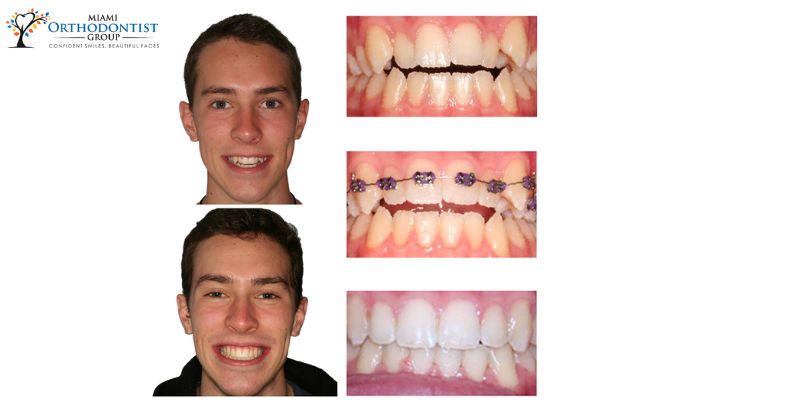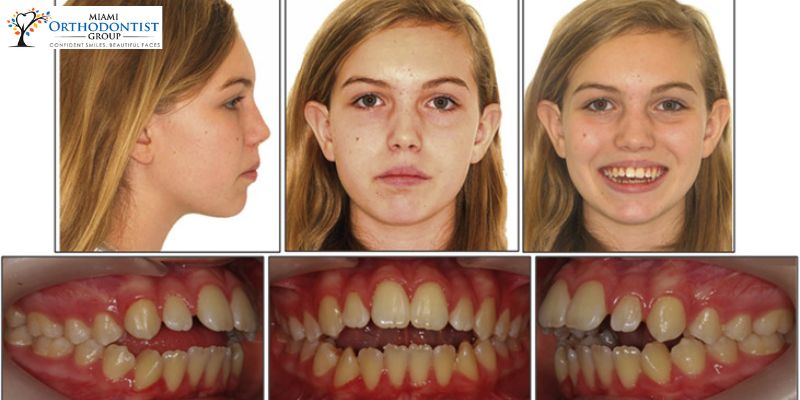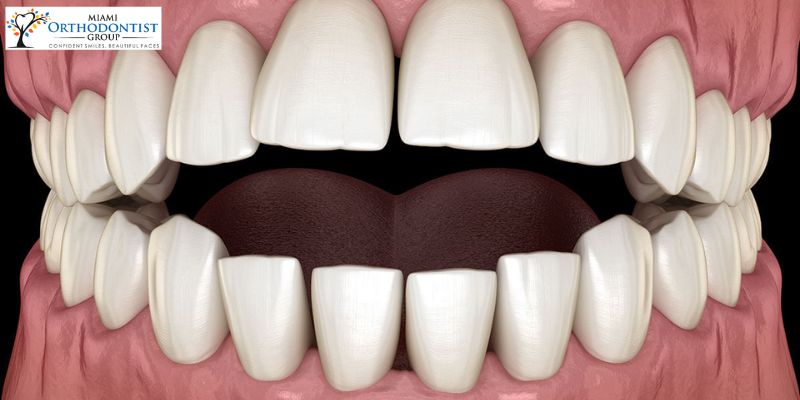Everyone needs teeth with perfect alignment to bite off their favorite foods. When your front teeth do not allow you to bite down as comfortably as they should, you have a bad bite, or malocclusion. An open bite is a malocclusion problem where both your upper and lower teeth do not touch each other. People with this condition eat with their back teeth, especially if they have frontal open bite problems.
Aside from missing out on enjoying your favorite food, you can also have a speech impairment, and your appearance can be altered. If you have an open bite, worry less, as there is an orthodontic solution to the problem. Here is what you should know about an open bite and the precautions to treat it.
What is an open bite?
 Open bite is one of the most common dental conditions requiring orthodontic treatment. When people have bad bites, it is generally known as malocclusions, involving the misalignments of the lower and upper sets of teeth. An open bite is a malocclusion, which happens when an individual closes the mouth but the upper and lower teeth do not meet each other, showing a gap between the sets.
Open bite is one of the most common dental conditions requiring orthodontic treatment. When people have bad bites, it is generally known as malocclusions, involving the misalignments of the lower and upper sets of teeth. An open bite is a malocclusion, which happens when an individual closes the mouth but the upper and lower teeth do not meet each other, showing a gap between the sets.
However, open bite problems can occur in both back and front teeth, even though it is more common to see people with frontal open-bite conditions. Generally, having malocclusion can affect an individual in many ways, and it can cause oral hygiene problems, consistent and severe mouth pain, gum and tooth decay, and other related problems.
Open bite is a complicated dental condition, and only professional orthodontists can best deal with it. During the treatment, an experienced orthodontic specialist uses Invisalign or another variety of orthodontic braces to correct the situation. When you fix your open bite problem, your confidence will improve, you will eat better, speak better, and live a happier life.
Open-bite varieties
 There are different types of open bite problems. Knowing the one you are suffering from can help you find a suitable and effective treatment.
There are different types of open bite problems. Knowing the one you are suffering from can help you find a suitable and effective treatment.
Bite open
Dental open-bite is the type of malocclusion that occurs when you encounter issues that prevent your teeth from erupting.
Anterior open bite
An individual is said to have an anterior open bite when the bottom and top of the frontal teeth in the front cannot meet or overlap each other for a full bite. This bite condition affects the teeth at the front, but it can also occur on only a few teeth. Treating anterior open-bite problems can improve your speech and eating, and it can also improve your smile.
On the backside, there is an open bite
Anterior open bite is the inverse of anterior open bite.This condition occurs when an individual has teeth barely touching the back. The molars and premolars are the most affected teeth in this open-bite problem. Furthermore, chewing is no longer an issue once a posterior open-bite treatment is done.
Open skeletal bite
Skeletal open bite is usually linked with irregular facial growth due to genetics.
Bite open
Temporomandibular joint disorder (TMD)
Chronic jaw pain can arise from suffering from a temporomandibular joint disorder. TMD can lead to open-bite problems because when you close your mouth, your upper and lower teeth do not meet due to the pain in your jaw.
Thumb sucking, tongue thrusting, and immoderate use of pacifiers
People who excessively use pacifiers as kids suffer from open-bite problems later in life after losing their baby teeth. Also, tongue thrusting and thumb sucking are everyday habits that cause malocclusion.
Open-bite can get self-corrected if you control the behavior of sucking the thumb before permanent teeth begin to grow. Most kids’ prolonged thumb-sucking into adulthood can cause severe dental conditions.
People who engage in tongue thrusting do so by using their tongues to thrust their teeth apart gradually. It may seem unharmful until there is no more extended control over the action. Using the tongue to reposition the jaw can lead to an open bite.
Injuries
If you are suffering from an injury because of your misaligned jaw, it can cause an open bite problem.
Hereditary
Genetic factors contribute to open-bite problems. Therefore, your bad bite can be linked to your genealogy.
What are the precautions for treating open bites?
Open bites occur differently in people, and they can be severe, moderate, or mild. However, the following treatments can help in bringing a permanent solution to it:
1. Use braces to correct an open bite
Orthodontic braces are one of the most common treatment procedures. Braces can effectively treat different teeth, including open bites. Braces work by nudging the teeth into a perfect position gradually. You can wear orthodontic braces to achieve effective results.
2. Wear clear aligners
Clear Aligners are invisible braces you can wear to correct your open-bite problems over time. Clear aligners or Invisalign are comfortable and stress-free, unlike other standard orthodontic braces. You can remove the braces and put them back on during mealtime, and Invisalign provides fast results even when they are the easiest to use.
While some patients use traditional braces to treat their malocclusions, patients who choose to wear Invisalign can use custom-made aligners for a specific time to treat the open bite. However, clear aligners provide exceptional results if you have mild or moderate malocclusion.
Both standard braces and clear aligners can provide you with the best results. But, aligners have a lighter weight and are designed as tooth colors, and tooth movement is faster. Moreover, they are nearly invisible, and working-class adults prefer their use.
3. If your open bite is severe, you should consider oral surgery
Oral surgery is vital for people with open bites that cannot work with perfect results by wearing orthodontic braces only. Therefore, your orthodontist can suggest oral surgery if you have complicated open-bite problems. After the surgery, you can still wear braces to reposition the teeth better.
Conclusion
You can treat open bite problems at any age, but it is less painful and easier in children that have not fully grown permanent teeth. Open-bite problems can require treatments such as wearing orthodontic braces, clear aligners, or getting surgery, depending on the severity of your bite problem.


